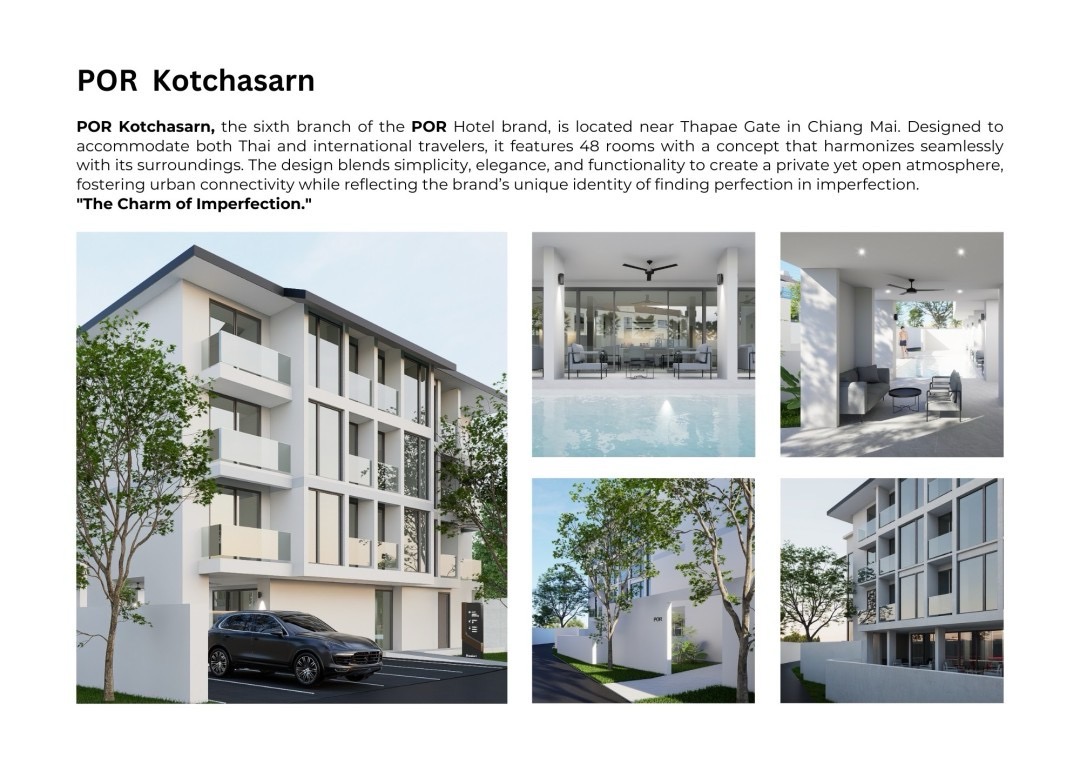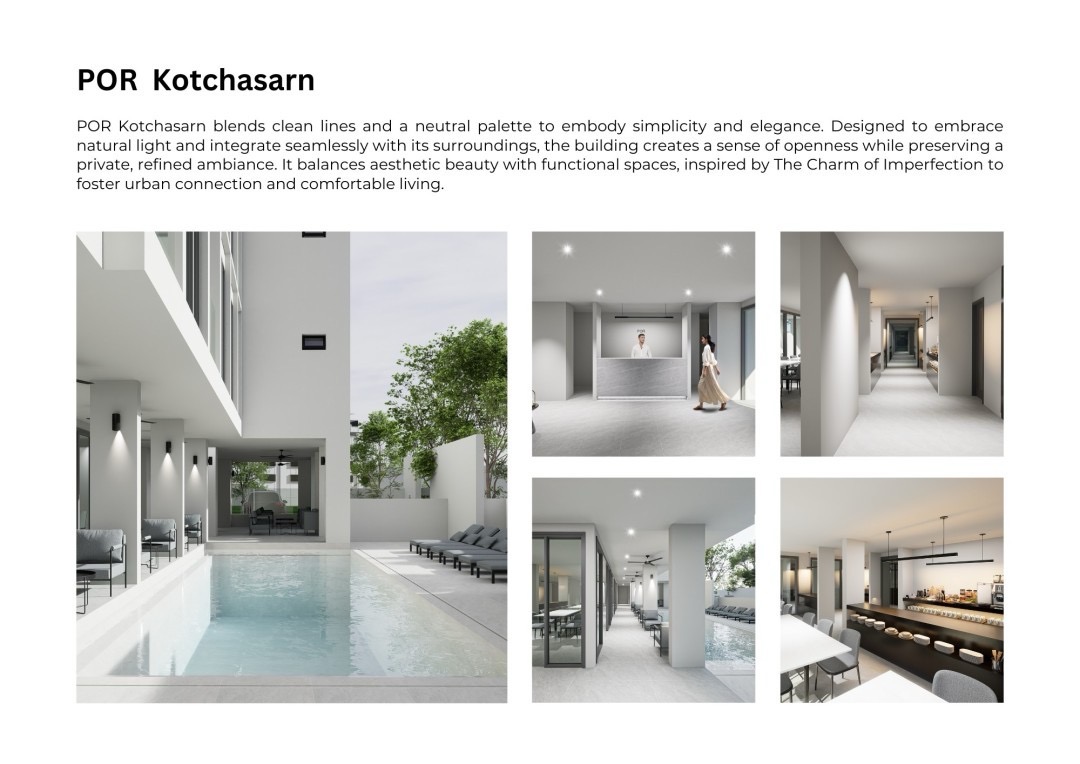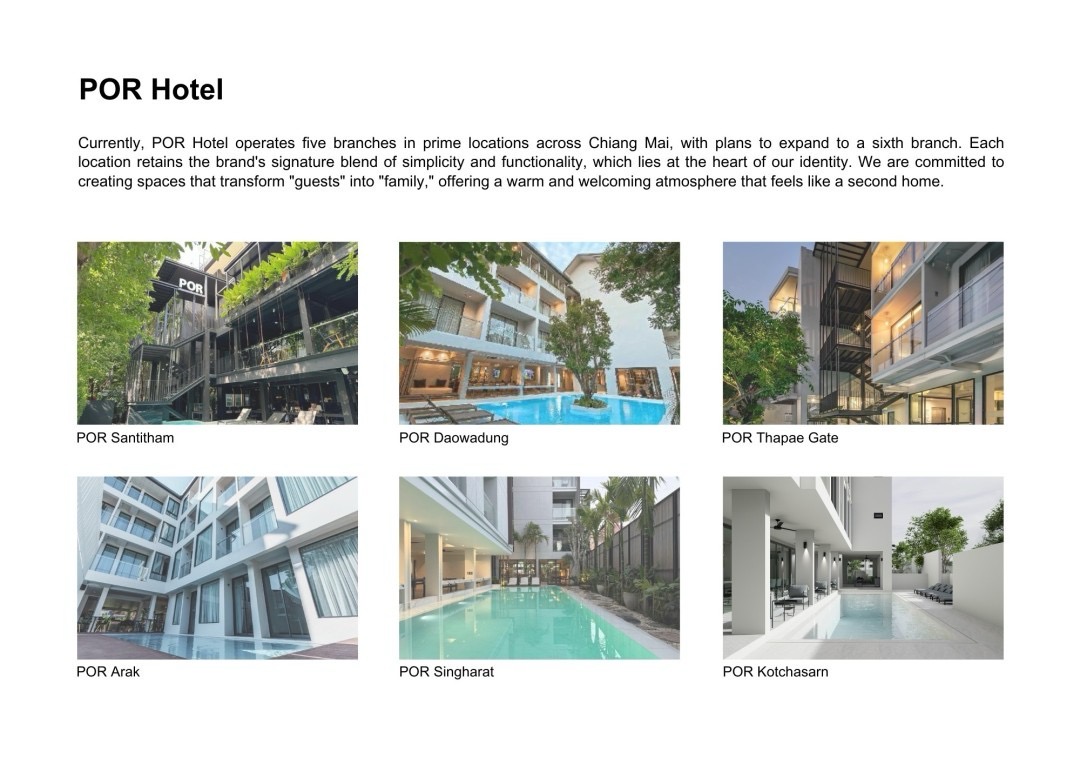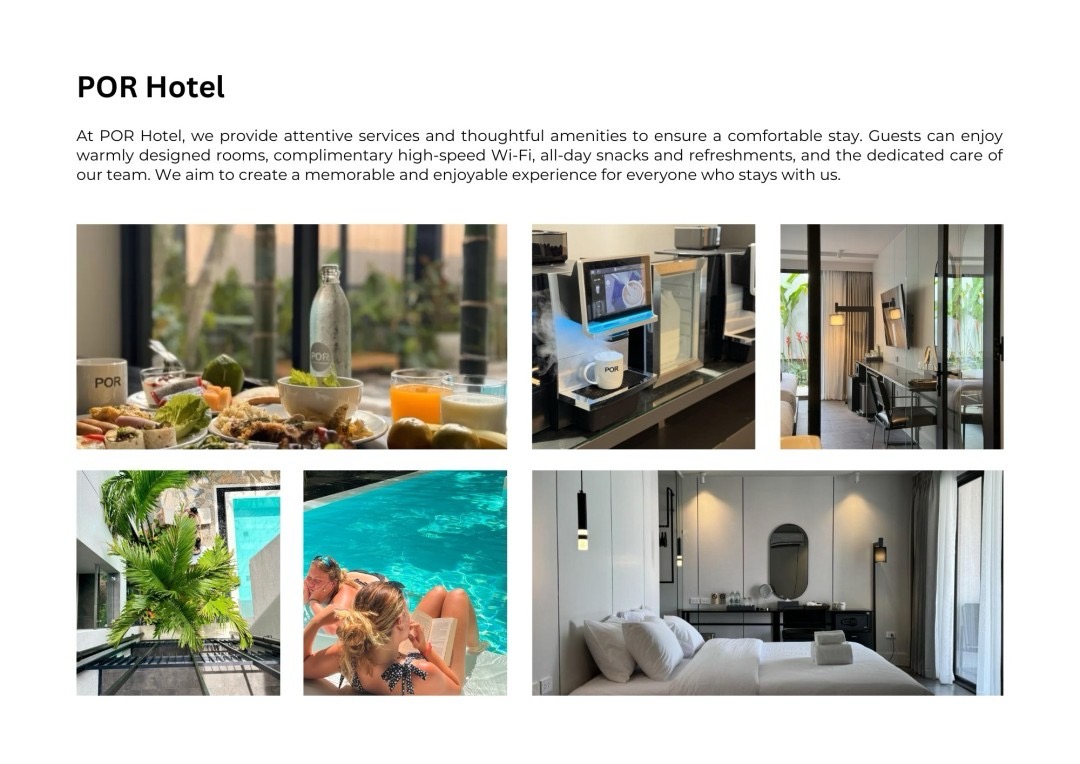
Narupol Chaiyot



Abstract :
In a world increasingly defined by brittleness, anxiety, nonlinearity, and incomprehensibility (BANI), hospitality design must evolve from efficiency-focused models to spaces that foster emotional grounding, adaptability, and connection. This paper presents POR Kotchasarn, the sixth branch of the POR Hotel brand in Chiang Mai, Thailand, as an applied case study in BANI-responsive hospitality design. Drawing from the lived experience and design iterations of five preceding POR properties, this study explores how principles of human-centered design, emotional architecture, and care-based service models are used to create resilient, minimalist spaces. The result is a hospitality environment that balances openness with privacy, simplicity with depth, and aesthetic beauty with functionality—supporting guests not only as travelers, but as emotional beings navigating complexity.
Objectives :
This paper aims to analyze how the design of POR Kotchasarn embodies a response to the challenges of the BANI framework. It investigates how insights from five prior POR properties informed a resilient and emotionally supportive hospitality model through spatial simplicity, operational adaptability, and aesthetic minimalism.
Conceptual Framework :
-
BANI Framework (Cascio, 2020):
Emphasizes brittleness (lack of flexibility), anxiety (emotional overload), nonlinearity (unpredictability), and incomprehensibility (lack of clarity). POR’s design language is positioned as a countermeasure to each of these conditions.
-
Human-Centered Design (Norman, 1988):
Design is shaped around user needs, emphasizing usability, emotional comfort, and intuitive interfaces.
-
Emotional Architecture (Barragán):
Spaces evoke emotional resonance, using simplicity, light, and form to create serenity and warmth.
-
Psychological Safety (Edmondson, 1999):
The hotel environment acts as a safe space, reducing cognitive load and decision fatigue for anxious or overwhelmed guests.
Process / Methodology :
The design process of POR Kotchasarn followed an iterative, experience-based methodology:
-
Case Analysis of POR 1–5
Evaluated design successes and guest feedback across POR Santhitam, Daowadung, Thapae Gate, Arak, and Singharat. Identified recurring spatial behaviors, bottlenecks, emotional responses, and material resilience.
-
Design Prototyping and Feedback Loops
Floorplan, light exposure, communal space, and flow were simulated and refined based on usage patterns in the prior properties.
-
Collaborative Design Reviews
Involved cross-functional teams (architecture, operations, guest relations) to ensure spatial design aligned with operational needs and emotional outcomes.
Techniques and Materials :
-
Materiality
Neutral palettes, matte textures, and raw finishes create a calm, unintrusive backdrop for diverse guest emotional states.
-
Lighting and Layout
Natural light is maximized using clean lines and large apertures. Artificial lighting avoids harsh contrasts to maintain spatial serenity.
-
Spatial Flow
Hallways are elongated and decluttered to reduce overstimulation. Public areas like the breakfast zone and poolside were designed to allow both interaction and solitude.
-
Furnishing and Interface:
Simple, modular furniture with human-scaled proportions ensures functionality without complexity.
Result / Conclusion :
POR Kotchasarn emerged as a distilled expression of the brand’s cumulative design learning, integrating emotional design theory with practical hospitality knowledge. The project demonstrates how simplicity can be a strategic response to complexity, especially in BANI conditions. It supports emotional grounding for travelers through clarity in spatial design, operational calmness, and sensory consistency.
The property also reveals that resilience in hospitality is not about rigid systems, but about flexibility, adaptability, and spaces that feel emotionally safe. The Charm of Imperfection—POR’s guiding aesthetic—is not only visual but philosophical: embracing variability and designing for the human condition rather than for ideal conditions.
References :
Barragán, L. (n.d.). Emotional architecture. [Exhibition notes and architectural archives]
Brown, T. (2009). Change by design: How design thinking creates new alternatives for business and society. Harvard Business Press.
Cascio, J. (2020). Facing the age of chaos. Medium. Retrieved from https://medium.com/@cascio/bani-2-0-7bba2b92f841
Cila, N., Desmet, P. M. A., & Hekkert, P. (2017). The role of product metaphors in design for emotion. International Journal of Design, 11(2), 1–13.
Edmondson, A. C. (1999). Psychological safety and learning behavior in work teams. Administrative Science Quarterly, 44(2), 350–383. https://doi.org/10.2307/2666999
Norman, D. A. (1988). The design of everyday things. Doubleday.
Pine, B. J., & Gilmore, J. H. (1999). The experience economy: Work is theatre and every business a stage. Harvard Business Press.
Thackara, J. (2005). In the bubble: Designing in a complex world. MIT Press.